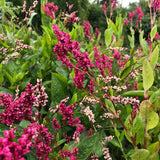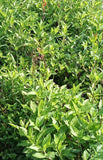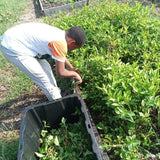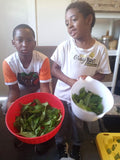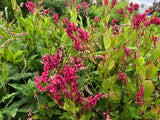Japanese Indigo
Persicaria tinctoria
These pink-flowering plants turn your fabrics a brilliant blue when their leaves oxidize. This buckwheat family species originates in Asia and Eastern Europe, and has been used in East Asia for millennia as a dye plant, especially in China, Japan, and Korea.
Read more from our grower from 2020-2022, Mr. Bernard Singleton of Nebedaye Farms:
Grown throughout the world in tropical and subtropical climates, indigo was grown in South Carolina in the 18th century to produce blue dye that was exported to Europe for use in the textile industry there. At one point, indigo dyestuff, behind rice, was South Carolina’s second most profitable commodity for export. While credited with having great success in indigo, Eliza Pinckney’s work has been greatly exaggerated. It is thought that African captives transported to South Carolina likely brought some of their knowledge and skill around indigo production directly from the African continent, or from experiencing working with it in the Caribbean prior to landing in the Southern colonies.
The cultivation and production of indigo involved the labor of many thousands of enslaved Black and indigenous workers, mostly women and including children. The cultural memory of indigo is embedded in members of the African-American community along what is now known as the Gullah-Geechee Corridor in South Carolina, Georgia, Florida, and beyond. In addition, the African presence in indigo is also visible in Mexico, Central and South America. At Nebedaye Farms African Botanical Gardens we continue to grow rice and indigo to maintain a proper relationship with our ancestors, to acknowledge their sacrifice, and to preserve their Botanical legacy in the Americas as we are a part of the Gullah-Geechee culture.
Days to maturity: 150
Seeds per pack: 75-100
Germination rate: 92% on 08/07/2025
Planting / harvesting notes
Sow indoors and transplant the strongest seedlings into the garden after the last danger of frost, 1’ apart. These plants are very cold sensitive.
Seed keeping notes
Harvest the seed clusters when the flowers have wilted and turned brown, containing hard, black, shiny seeds.







